Start » Septoriasis in the pistachio tree: Causes, symptoms and control measures.
Septoriasis in the pistachio tree: Causes, symptoms and control measures.
Table of Contents
Estimated reading time: 9 minutes
Causes and origin of the disease.
Septoria is a fungal disease caused by ascomycete fungi. These fungi are responsible for the appearance of the disease and its spread in pistachio trees. Knowing the causes and origin of this disease is essential to implement effective control measures.
Responsible ascomycetous fungi.
The ascomycetous fungi of the species Septoria pistacina, S.pistaciarum and S.pistaciae They are mainly responsible for septoria in pistachios. These fungi develop and spread on the leaves and fruits of the pistachio tree, causing significant damage to the health of the trees. Its presence is related to climatic conditions and humidity, being more prevalent in times of rain and favorable temperatures. Its optimal development temperature is from 10ºC and The incubation period is between 10 and 30 days. Under favorable conditions, at the end of April, especially after the rains, primary infections occur. The spores of these fungi are dispersed by rain and irrigation water, with spring rains being a key trigger.
Permanence of the fungus during the winter.
The fungus responsible for septoria It can survive during the winter in the fallen leaves of the pistachio tree. During this season, the fungi remain dormant, waiting for the right moment for their release and development. It is from the arrival of spring and the increase in temperature, especially when it reaches 10 degrees Celsius around April, that the fungi begin to activate and release, once again affecting the pistachio trees.
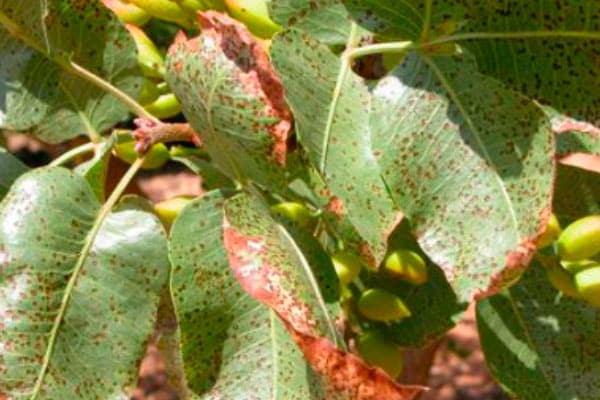
Symptoms of septoria on leaves and fruits.
Septoria in pistachios manifests itself through different symptoms on the leaves and fruits of the tree. These symptoms are visual indicators of the presence and severity of the disease, allowing farmers to identify and monitor them.
These symptoms include:
- Irregular necrotic brown leaf spots.
- Lesions on petioles and leaflet venation.
- Chlorosis and necrosis in affected areas.
- Continued high HRT with masses of white mycelium.
- In severe attacks, symptoms can be seen on the fruit.
- In severe attacks along with prolonged periods of drought, necrosis and total defoliation can occur.
- If the defoliation is early it causes the weakening of the pistachio tree.
- Loss of plant reserves.
Brown spots and their growth
One of the main symptoms of septoria in pistachios is brown spots. that appear on both the leaves and the fruits. These spots initially appear as small brown lesions, which Over time they can increase in size and spread throughout the affected surface.
The growth of these brown spots is progressive and can cover large areas of the leaves and fruits. In severe cases of septoria, the spots cause deformation and deterioration of the affected structures., compromising the health and normal development of the pistachio tree.
Impact of late spring and summer rains.
Late spring and summer rains play a crucial role in the severity of septoria in pistachios. These precipitations provide a humid and conducive environment for the development and spread of the fungi responsible for the disease.
The humidity generated by the rains favors the release and dissemination of the spores of these fungi, which can infect the leaves and fruits of the pistachio tree.. The combination of optimal humidity and temperatures during this time of year creates ideal conditions for the development and spread of septoria..
Consequently, Late spring and summer rains increase the susceptibility of trees to the disease, increasing the presence and severity of septoria symptoms in leaves and fruits of pistachios.
Preventive and control measures
Among the measures to be adopted to prevent and control Septoria infection, there are cultural measures, framed in adequate tillage techniques, and chemical measures with specific treatments to prevent and treat this fungal infection.
Pruning and removing affected branches and leaves.
To prevent the spread of septoria in pistachios, It is essential to carry out regular pruning and remove branches and leaves affected by the disease.. Proper pruning allows diseased tissues to be eliminated, thus reducing the presence of the fungus in the plant. It is important to carry out this task with clean and disinfected tools to prevent the spread of the disease to other parts of the tree. Besides, It is essential to collect and eliminate fallen leaves and mummified fruits, burning or burying them., since they can be reservoirs of the fungus during the winter and contribute to the appearance of new outbreaks of septoria in the following season.
Balanced fertilization and avoidance of excess nitrogen.
Balanced fertilization is key to strengthening the resistance of pistachios against septoria. It is important to provide the nutrients necessary for healthy plant growth, avoiding both lack and excess of fertilizers. In particular, It is recommended to avoid excess nitrogen, since it can promote the development of fungal diseases such as septoria. It is necessary to perform soil analysis and follow specific fertilization recommendations to maintaining the proper balance of nutrients in growing pistachios.
Avoid excess watering.
Excessive irrigation favors the dispersal of fungal spores by water, being a key transmission factor in the epidemiology of septoria. Therefore, adequate irrigation is recommended, avoiding waterlogging.
Recommended preventive chemical treatments.
There are different preventive treatments that can help control septoria in pistachios. Some of the recommended products include the use of cupric compounds such as copper hydroxide, also potassium oleate, Equisetum arvense L., trifloxystrobin, azoxystrobin, propiconazole and chlorthalonil.
These fungicide products help prevent infection and reduce the incidence of the disease in trees. They should be applied from sprouting, after the first spring rains.. It is important to follow the dosage and application instructions for the specific product, as well as respect the waiting times before harvesting. Cupric compounds should be applied when the fruit reaches 1 cm. To avoid damage due to phytotoxicity.
In addition to these treatments, It is important to maintain constant monitoring of the plantation and take additional preventive measures as necessary to control the spread of septoria.
Research and advances in the fight against septoria
In the field of research on septoria in pistachio cultivation, a study carried out by a team from the University of Córdoba and the Andalusian Institute for Agricultural Research and Training has identified the fungus S. pistaciarum as responsible for this disease. This important discovery has allowed significant progress in the understanding of the pathology and its control. The study was carried out by analyzing samples of infected leaves and fruits, using molecular techniques and specific identification of the pathogen.
Implications in the development of control measures.
The identification of the fungus S. pistaciarum as the cause of septoria in pistachios has direct implications for the development of more effective control measures. With this knowledge, specific prevention and treatment strategies can be established to combat the disease more precisely and efficiently. This will be a significant advance for pistachio farmers and producers, as it will allow them to minimize the negative effects of septoria on their crops.
It is important to highlight that this discovery is the result of the continuous efforts of the scientific community and its commitment to agricultural research. Collaboration between academic and research institutions has been essential to obtain these advances in knowledge about the disease and its control. Now, it is necessary to continue deepening the study of septoria in pistachio to establish more effective and sustainable measures in the long term.
This fundamental care is carrying out preventive treatments with specific phytosanitary products against diseases and pests of the pistachio tree, especially in those towns or regions where Verticillium in the pistachio tree is already present.
Other diseases of the pistachio tree and their prevention.
In addition to septoria, there are other diseases that can affect the pistachio crop. In this section we describe some of these diseases, which we have already written about in other entries on our blog, or which we will write about soon, and how to prevent them.
Alternaria and botryosphere in the pistachio tree.
The alternation, the botryosphere and the verticillosis, which we already talked about in other entries of the mushroom category, are fungal diseases that cause spots to appear on pistachio fruits. In the case of the botryosphere, these spots become covered with mold, which causes the loss of fruit quality.
To prevent these diseases, in addition to eliminating infected fruits, it is important to carry out good care of the pistachio tree, such as correct pruning, good nutrition and an adequate irrigation system. You must also maintain the hygiene of the plot to prevent the spread of these diseases.
Verticillosis in the pistachio tree.
Verticillosis is a fungal disease that can affect the pistachio crop. It is caused by the fungus Verticillium dahliae Kleb and is transmitted through the soil and can remain in it for many years. Among the symptoms that it can cause in the pistachio tree are the wilting of branches and necrotic spots on the leaves and fruits.
To prevent this disease, it is important to carry out appropriate tillage and care practices, such as selecting resistant varieties, soil analysis, and avoiding waterlogging. Additionally, fungicide treatments are available to control the disease.
Pistachio rust.
Pistachio rust, which we will also talk about in future blog posts, is another fungal disease that manifests itself, in this case, through appearance of reddish spots on the leaves and mummification of the fruits. Besides, can cause branches to die of the plant.
To prevent this disease, it is important to carry out good hygiene of the plot and tools, as well as the use of specific fungicides. It is also necessary to maintain a good irrigation and nutrition system for the tree.
- Use resistant rootstocks, such as UCB1 that you can buy in our Online store in forest tray or in pots .
- Do soil analysis prior to planting.
- Carry out selective pruning.
- Maintain adequate hygiene in tools and machinery.
- Remove infected branches and leaves.
Sources:
- PISTACHI TREE DISEASES and other alterations caused by abiotic agents. “EL CHAPARRILLO” AGRO-ENVIRONMENTAL RESEARCH CENTER.
Specialized technical advisory services
At Mister Pistacho we offer specialized technical advisory services for pistachio producers, in order to offer personalized and effective solutions in the control of the Botryosphere and other diseases and pests of the crop. These services have specialized professionals who provide information on the proper management of the crop and the measures to take to prevent and control the disease.
If you need help with verticillosis or any other fungal disease of the pistachio tree, do not hesitate to contact us.
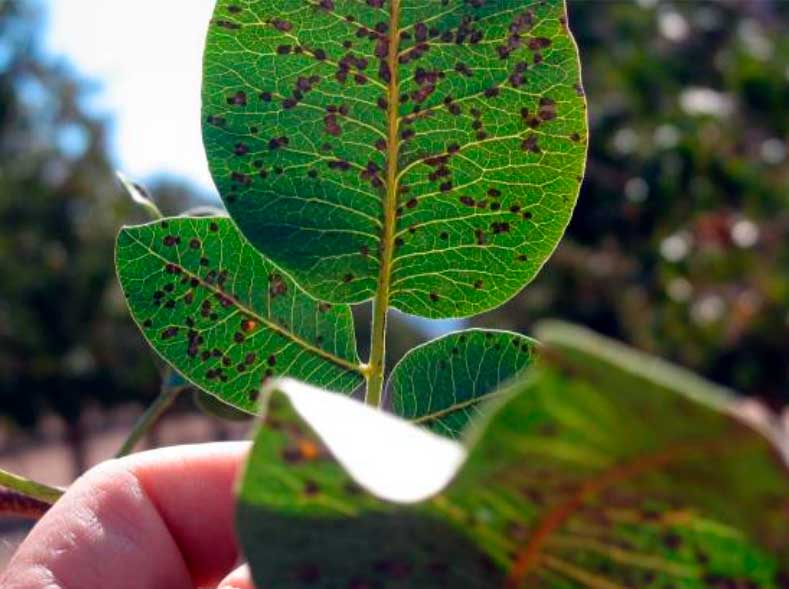
Related content:
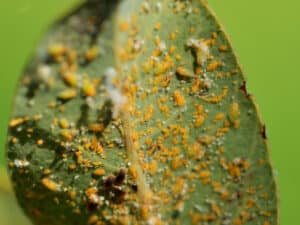
Pistachio psylla: A threatening pest in crops in Castilla-La Mancha and Extremadura
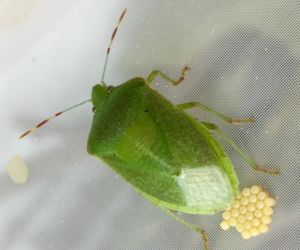
Pests of the pistachio tree: The green stink bug (Nezara viridula L.)
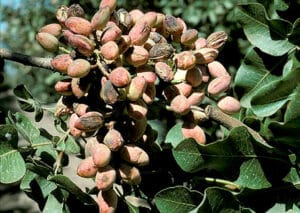
Alternaria in the pistachio tree: how to prevent and treat this common disease.
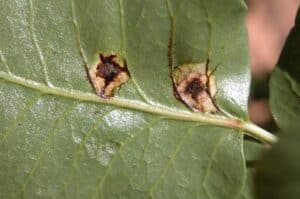
Rust in the pistachio tree: Pileolaria terebinthi C. and its impact
Seeker:
Find out now:
You may also like:
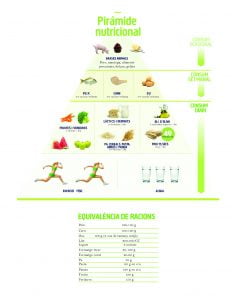
Pistachios star in the new pyramid of the Mediterranean Diet, one of the healthiest in the world.
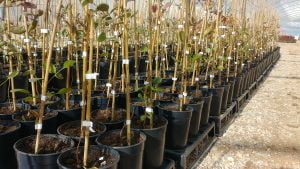

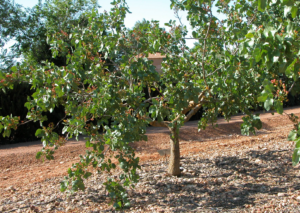
Pruning the pistachio tree: a key aspect in the cultivation and growth of the plant.
Entries by category:
- pistachio tree (1)
- Benefits of pistachio (4)
- Pistachio marketing (4)
- Price tables (3)
- Pistachio cultivation (8)
- Diseases and pests (8)
- Legal (7)
- Misterpistachio (1)
- Pistachio News (5)
- Rootstocks (2)
- Store (3)
Share this post with one click:
